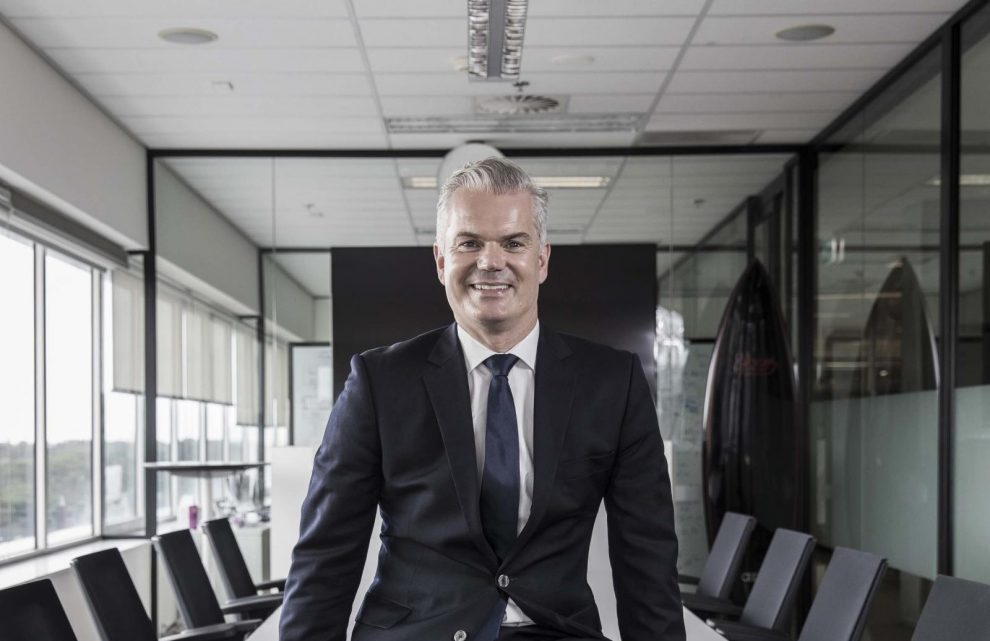The future of mobility seems like one where everything is possible: high-speed travel in vehicles that never crash because they see each other coming, via 5G; a smorgasbord of motoring options delivered to your door as part of a subscription service; and not so much as a whiff of CO2 coming out of an exhaust pipe, because cars don’t have them anymore.
WITH STEPHEN CORBY
Everything, that is, except the Australian Government creating a coherent energy policy that might help us get to that future, which is why people such as Audi Australia boss Paul Sansom and his colleagues in the local car industry have decided to drive the issues, particularly on the necessary shift to electric vehicles.
Yes, you read that right. Car companies are the ones shouting for a carbon-neutral future, while politicians cover their ears and hum.
“The FCAI [Federal Chamber of Automotive Industries] has collaborated with all of its members to come up with its own CO2 targets for 2030, which is quite a unique situation globally, because in most other countries those targets are legislated for us but here the manufacturers had to come up with their own,” Sansom says.
Leading the way on climate change is clearly something he is passionate about – again, that’s not what you might expect from someone who works in an industry that’s one of the world’s biggest emitters – and he’s taking his company even further.
A few weeks ago, when Audi Australia unveiled what it hopes will be a game-changing full electric vehicle – the e-tron – for the infamously reticent, combustion-loving local market, Sansom announced it was making a commitment to be 100 per cent carbon neutral by 2021, largely through a partnership with the Capital Wind Farm in Canberra.
“At some point there’s going to be less choice for consumers of combustion engines and more choice of electrified vehicles; it’s inevitable.”
Paul Sansom / Audi Australia
“You can certainly buy your energy cheaper, but we’ve made that decision as a leadership team here in Australia because the more businesses that make this commitment, the cleaner the power grid is going to get,” he explains. “By demonstrating leadership on this, we hope it encourages other businesses, from all sectors, to do the same, because the more demand there is for clean energy the more will become available.”
It might seem like a brave, or crazy, move to launch an EV in a market like Australia, where they make up less than 1 per cent of new-car sales (and around 80 per cent of those are Teslas), but the fact is that local car companies don’t have much choice.
In Europe, where governments have been encouraging people to buy EVs with subsidies and free cash for years, 18 per cent of all cars sold in July this year were electrified (EVs or plug-in hybrids), and cities such as Paris, London and Barcelona are looking to ban the sale of internal-combustion vehicles by the end of the decade.
“At some point there’s going to be less choice for consumers of combustion engines and more choice of electrified vehicles; it’s inevitable,” Sansom insists.
“It’s hard to imagine the transformation that’s going on around the world when you’re sitting here in Australia and not seeing it, but the changes in major European cities, and in the US, are huge. Part of what we’re doing is trying to educate buyers and to bust the myths about range anxiety, but our surveys show that more than 50 per cent of Australians say they’d be interested in buying an EV. They’re just not doing it.
“I suspect what we’ll see here is that the curve of adoption will get very steep, very quickly, as more models come – by 2025, Audi will be offering 30 electrified cars in Australia and by then electrified vehicles will make up some 40 per cent of our total global sales.”
Car companies do, of course, enjoy making bold predictions about the future. Way back in 2016, Audi made the pronouncement that, within the next year, it would put a new A8 limo on the road boasting Level 3 autonomy, meaning “hands-off, eyes-off” motoring, or the ability to read a book at the wheel.
You might have noticed that this has not happened, and yet self-driving cars are still a regularly raised promise. Sansom insists that the technology exists – “and not just at Audi – look at Google’s Waymo, and Tesla; there’s still a race to bring autonomy to the market” – but governments allowing it on public roads is another thing entirely.
“Everyone sees the benefits; safety, first, but there’s a whole bunch of reasons we’re investing billions into the R and D,” says Sansom. “The level of excitement back in 2016 was great, but the reality of seeing it on our roads… we still have some way to go. Legislation is the big thing, in all countries, but there’s a whole bunch of things in Australia we’d need to ensure an autonomous car could be driven safely and legally with other road users who haven’t got autonomy.”
Some experts have suggested the only way autonomous cars could succeed is to take human drivers off the road entirely, because it is our behaviour that makes things so difficult for the software. How do you teach a computer that someone nodding at you across an intersection is happy for you to pull out in front of them, semi-illegally? We will reach a kind of mid-point, though, when the 5G network is rolled out and cars gain the ability to communicate instantly, not only with each other, but with infrastructure such as traffic lights, sensors and car parks.
“The advent of high-speed 5G will play a critical role in how vehicles will communicate with the environment around them, and also car to car, and that will bring so many benefits in terms of safety and convenience,” Sansom enthuses. “We’ll have much better quality data, for instance; 3G and 4G can provide location data that’s accurate to within a few metres and with 5G it will be down to centimetres.
“One example is that if a car slips on black ice up in front of you, it will tell your car before you get to it exactly where that is and warn you. Things like swarm information are also a huge part of the industry that’s developing rapidly, and that’s why we’re collaborating with BMW and Mercedes-Benz and the whole Volkswagen Group to work on peer-to-peer technologies.”
Alongside the fact that people are increasingly buying cars online, sometimes without even test driving them, one truly radical change that’s coming is subscription services. Audi America is already trialling its Silvercar service, which offers members a choice of an A4, an A5 Cabriolet, a Q5 or a Q7, depending on their needs. So you no longer own one car but buy a Netflix-like subscription to many, albeit with a lot less choice.
“It has a future for sure, and I think the generations coming up behind us are probably less inclined to feel the need to own a vehicle when there are mobility options around that offer them more flexibility,” Sansom says.
“It really is horses for courses, though, because equally some people wouldn’t want to jump into a different car every five minutes – people who say ‘Owning my car is incredibly important to me. I keep it in a certain way and maintain it.’
“We’re just evolving very quickly and trying to stay ahead of the curve, but it’s definitely something Audi globally is looking into. If it’s right for our customers, we will offer it.”
This article appeared in the Autumn 2021 edition of Life Begins At… Click here to read or here to subscribe and never miss an issue!






















Add Comment